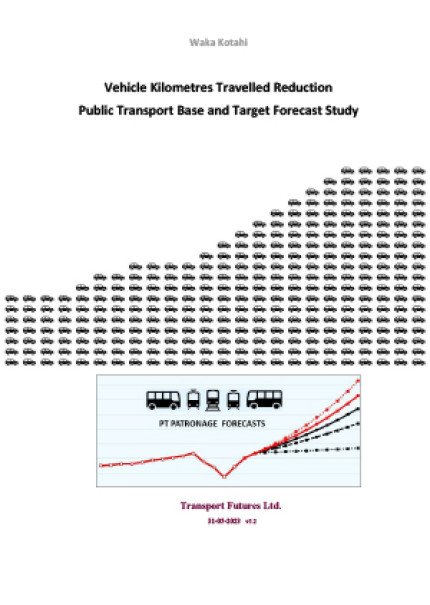Published: 31 May 2023 | Category: Research programme , Research & reports | Audience: General
The Emissions Reduction Plan includes a target to reduce national light vehicle kilometres travelled by 20% (relative to projected growth) by 2035. Public transport will need to play a major part in supporting mode shift, and this analysis was undertaken to estimate the scale of growth in public transport (PT) that would be required to support delivery of the VKT reduction target.
The analysis includes a national level assessment of the overall PT task for five different scenarios, as well as sub-national assessments for Tier 1 and 2 urban areas.
The analysis indicates that to sufficiently contribute to light VKT reductions, passenger kilometres travelled by public transport would need to return to pre-COVID levels by 2024, and then increase by approximately 10 percent per year between 2025 and 2035.
By way of comparison the annual increase in passenger kilometres travelled achieved between 2010 and 2020 was four to five per cent.
In real terms, an annual increase of 10 percent means that by 2035 passenger kilometres travelled would need to:
This analysis was commissioned to help build an understanding of the scale of the challenge to deliver on VKT reduction targets. It is not intended that the findings of the analysis should be treated as targets for each Tier 1 urban centre.
Rather the analysis should form an input into the development of urban programmes, to support conversations and planning around the potential size of the PT task, and the mix of interventions required deliver on targets.
